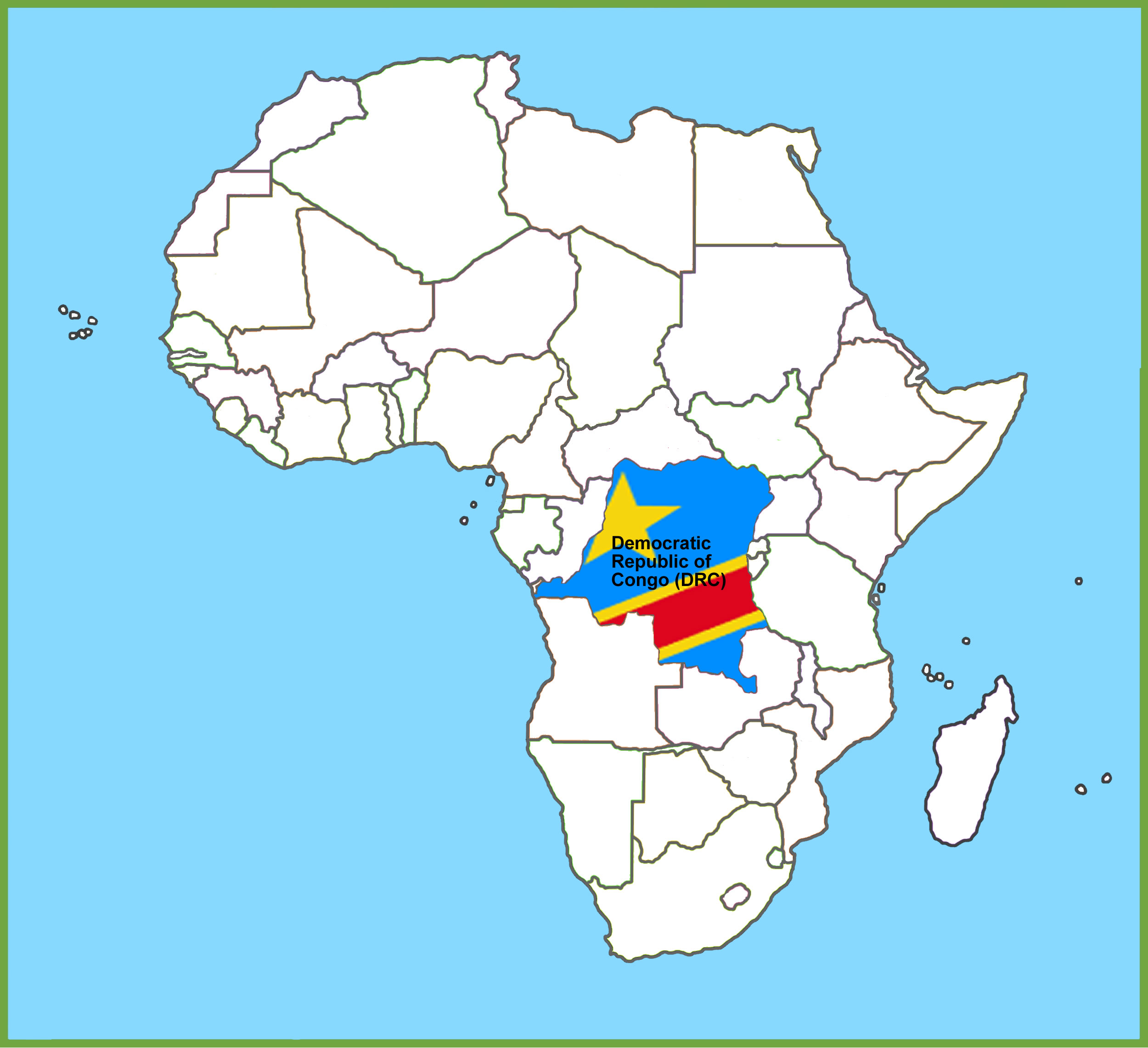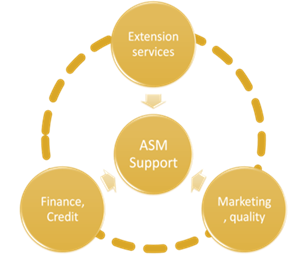
Democratic Republic of Congo ASM Profile Political Economy & Strategic Standpoints | Social and Environmental Factors | Local linkages | ASM Sites in DRC
The DRC mining sector holds abundant natural resources, high reserves of gold estimated at approximately 750 tonnes in proven reserves. 24 tonnes was produced in 2014. DRC is the second largest diamond producer with approximately 700 million carats in proven reserves. Gold is the most important extracted resource for ASM in the country with an estimated 80% of artisanal miners extracting the precious metal. Many of the Gold miners used to work in diamond mining during the gem’s boom period. In 2015, Congo exported 17.1 million carats of the gems, down from 33 million carats 10 years earlier (Wilson, 2017). The surge into gold mining was also driven by the global commodity price drop of other resources, diamonds notably while minerals such as coltan, cobalt or gold saw a rise in value and demand. Most of the known mineral wealth is concentrated near the country’s eastern borders, and south into Katanga where it shares the rich Copperbelt of the Lufilian Arc with neighbouring Zambia. In the south-central area of the country there is a large, prolific diamond area within the Kasaï Craton; along and adjoining the northeasterly Angolan kimberlite trend.
The benefits of formalisation of artisanal gold mining and identification of buyers is urgently needed for accountability purposes and stopping the trade of conflict minerals. Known armed groups in DRC have a long history of extensive involvement in mining. Artisanal gold miners produce between USD 1-2 billion annually and the activity unquestionably represents the biggest source of income for the region. However, there is insufficient trickle-down effect to the local community and linkages with the economy making the activity’s impact on regional development less than optimal.
Country Mining Vision Status
CMV Processes Underway.
Policies, Laws and Regulations Currently in Effect
2002 Mining Code
ASM Associations or Cooperatives
I. GAERN: Groupe d’appui aux exploitants des ressources naturelles - (Support Group to Natural Resources Operators)
II. RENAFEM: Réseau National des Femmes dans les Mines (National Network of Women in Mines)
III. CMDL: Coopérative Minière de Développement de Luisha (Development Mining Cooperative of Luisha)
IV. RECOPE:Reinsertion of Artisanal Miner Children into School using Community Child Protection Networks
V. CMKK: Coopérative Minière Maadini Kwa Kilimo (Mining Cooperative of Maadini Kwa Kilimo)
VI. AODERPRI: Association d’Exploitants Miniers Artisanaux pour la Pacification et Reconstruction de l’Ituri (Ituri Artisanal Miners Association for Peace and Reconstruction)
VII. COMAKAT:Coopérative Minières Artisanale de Katanga (Artisanal Mining Cooperative of Katanaga)
VIII. COMBEKA:Coopérative Minière de Bien Etre Communautaire de Kalehe (Communal Wellbeing Artisanal Mining Cooperative of Kalehe)
ASM Definition Criterion
Nationality; Mechanization; Nature of mineral; Area size
ASM Licensing
Artisanal: YES
Small Scale Mining: YES
ASM Minerals or Metals Exploited
Precious Metals Gold, Silver
Base Metals Iron ore, zinc, Copper, Nickel, Tin, Tantalum, Tungsten
Minerals Cobalt, Manganese, Uranium, Bauxite
Precious Stones Diamond
Mining Code Provisions for Women in ASM
No provisions or mention of women
Mineral Policy of the DRC:
Issue: Political stability, quality of local institutions and infrastructure conditions
Policy Objective: Redefine industry standards, primarily in critical areas to achieve social and economic development and for environment protection.
Policy Statement:
I. The Government will further develop the mining sector by focusing on the discovery of new deposits;
II. The Government will promote investment in basic infrastructure;
III. The government will promote investment and add value to minerals.
Mining Policy Environment:
Economic collapse, social instability, and resource looting lead to the proliferation of clandestine ASM activity in almost all mining provinces. In addition, following the two wars, foreign army invasions and occupations, militia activity, and ethnic conflict created more opportunities in ASM. ASM became a natural livelihood choice for internally displaced people and ex-combatants.
The government is considering revisions to the 2002 Mining Act to harmonize it with the Constitution, comply with international requirements, and further improve the business climate in the DRC. The DRC’s mineral wealth has yet to translate into sustainable socio-economic development as laid out by the Africa Mining Vision.
The DRC is focusing on establishing a stable policy environment by providing a fair policy environment for investors. As the World Bank notes: “The size, resources and location of the DRC have an impact on all of Central Africa and the continent more broadly.” The 2002 Mining code’s fiscal regime has generally been regarded as competitive and succeeded in attracting investment, despite the high risks of investing in the country with political stability cited as a concern for 80% of investors and 95% cited insecurity as a concern.
ASM SUPPORT TRIANGLE

Finance and credit
In the DRC, artisanal miners are heavily dependent on external sources of credit to finance and to buy equipment, pay for mine access or a miners cards for example. However, this is done through informal means.
Extension services - a phased approach to integration and capacity-building
With the goal of bringing change to the alluvial diamond mining sector in DRC, the Diamond Development Initiative worked with the DRC government, civil society and the private sector to implement a system of registration of artisanal diamond miners. The government has welcomed and encourages the establishment of local processing entities and the development of factories for cutting diamonds and other precious stones.
Marketing and quality
Opportunities for responsible gold sourcing, under the supervision of the DRC civilian authorities, are present throughout Eastern DRC. Following the progress made in cleaning up the trading chain of tantalum (coltan) and tin, processing and metallurgical units for other mining commodities were created. The DRC has also established trading shops for the nation’s precious and semi-precious minerals.

